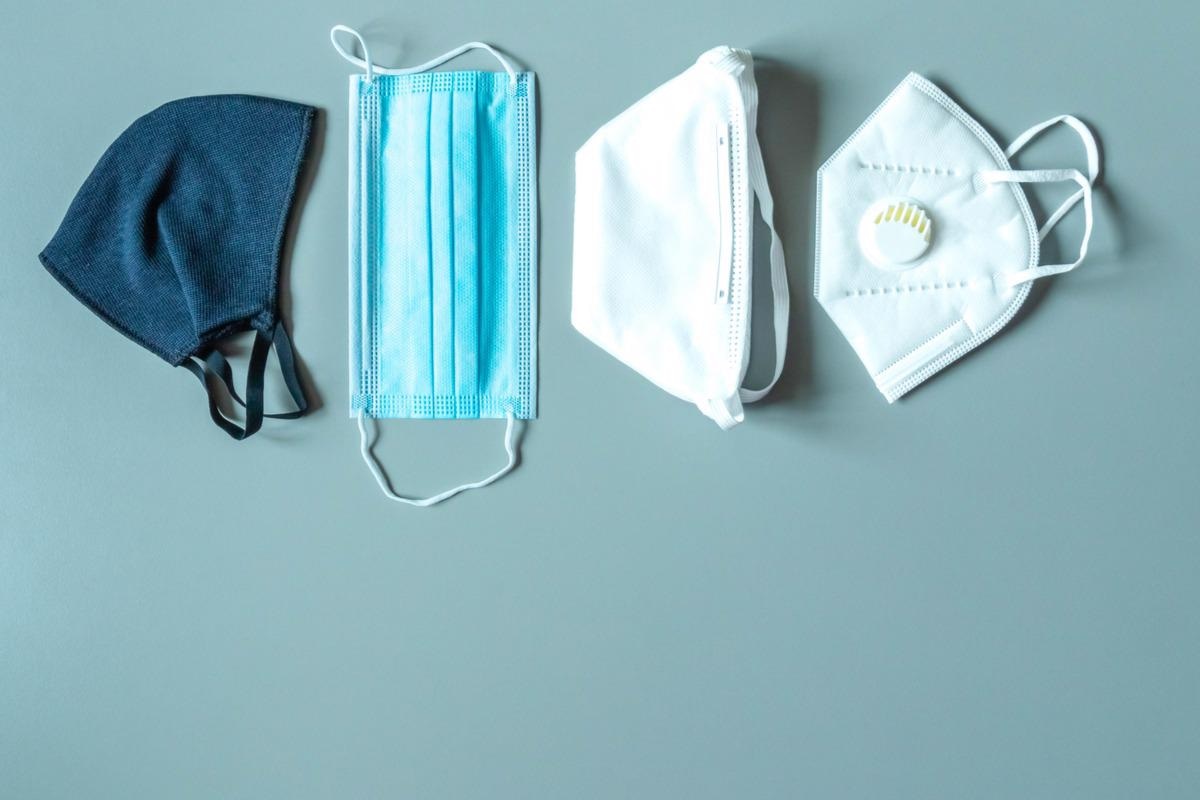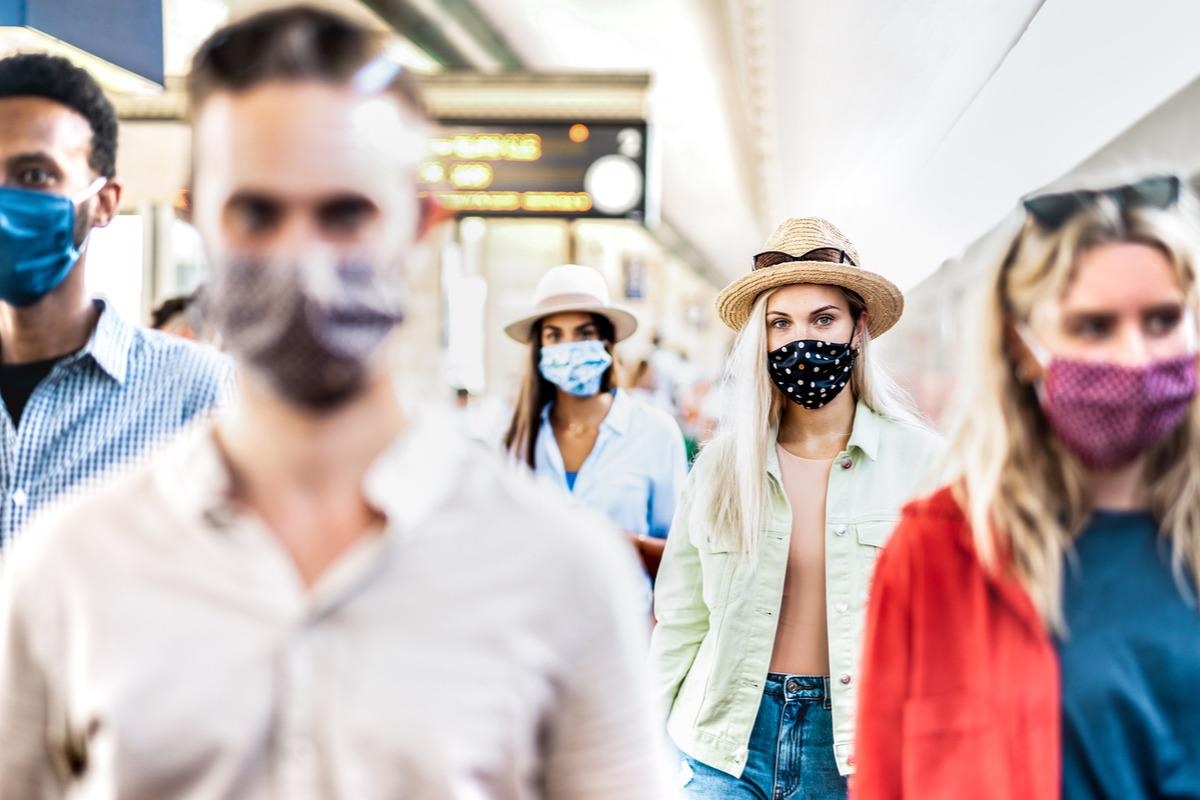In 2019, a novel virus emerged from Wuhan in China. Coronavirus 2019 (COVID-19) rapidly spread across the globe in a pandemic that the world has yet to recover. Emergency control measures, including border closures, lockdowns, and diverting healthcare resources, were implemented in different countries to various degrees over the past few years. Demand for clinical Personal Protective Equipment (PPE) exponentially increased as the number of coronavirus cases soared and introduced a new norm into the wider community.

Image Credit: bohemama/Shutterstock.com
Face masks have been traditionally worn in Eastern Asian countries during illness and the cold/flu season. This method began being adopted by other countries to limit the rate of infection in the fight against COVID-19. Individuals become infectious 2.5 days before the onset of symptoms which make masks an important preventative measure. To maintain the flow of PPE to clinicians, the public has been using cloth masks, face shields, and one-use face masks. Face masks have been produced with air vents, and the East Asian markets have produced KN95 and KF95 masks as alternatives to the American N95.
Different countries have their own certification system for medical masks. These masks may be produced solely for the clinical market with typically greater filtration efficiency and various outer fabrics for functions like splash resistance. These masks follow the standards that govern their home country. Due to the COVID-19 pandemic, rules have been relaxed to combat the PPE shortage, allowing masks that meet equivalent regulations to be used in countries other than their place of manufacture.
The Implementation of Masks
Masks were enforced in the West based on the precautionary principle, without hard evidence of how effective face masks were. Literature reviews in the first quarter of 2020 were aware of the lack of scientific enquiry covering the protection afforded by face masks against COVID-19. These searches looked towards studies of face masks and similar viral outbreaks.
Assuming a similar outcome to a review in 2010 on face masks and influenza epidemics, there was enough potential benefit that encouraged the adoption of the face mask – although the review highlighted a benefit to masks when worn by symptomatic individuals only. A small 2009 Australian study demonstrated a statistically significant benefit to wearing face masks against the flu.
Following on from this, two further reviews in April and May 2020 were released pre-print to scrutinise the efficacy of face masks against respiratory illnesses, including flu. These reviews utilised previous studies that included randomised controlled trials. Both of these reviews concluded that there was no statistically significant benefit to wearing face masks against infection. A limitation of reviewing the scientific literature regarding other respiratory viruses is that COVID-19 is more infectious with greater consequences.
Studies are being carried out to investigate the efficacy of face mask prevention against COVID-19 specifically. An experiment spraying COVID-19 as an aerosol concluded that while the virus can remain airborne for several hours, surgical face masks could act as a barrier. A longitudinal study in Hong Kong looked at the effect of non-medical precautions taken against COVID-19: social distancing and face masks. The conclusion showed a statistically significant benefit.
One study at the end of 2020 plotted regional public data in Germany to measure the impact of mask-wearing as masks became mandatory at different time points in different areas. The study concludes that face masks have reduced the number of new infections by 45% after 20 days of becoming mandatory. The biggest reduction of over 50% was seen in over 60s as face masks became standard PPE in care homes.
Efficacy of Masks for the General Public
Lockdowns brought out creativity in the public, with many people making their own washable cloth masks. A study by Stanford University found that cloth masks are only 10 - 35% effective at stopping aerosol particles the size of COVID-19 particles. Compared to surgical masks – these are typically the blue one-use masks that are widely available – which was 95% effective at stopping these aerosol particles from passing through.

Image Credit: View Apart/Shutterstock.com
Surgical masks are made of polypropylene and are shaped by melting at high temperatures. This structural make-up is more effective at stopping particles than woven fabric. The outer blue or coloured layer acts as a fluid repellent while the inner layer is absorbent. Stanford University found that these masks could remain effective after rinsing or even washing through 10 cycles, no longer requiring users to discard after a single-use.
The market also boasts N95, KN95 and KF95 respirator masks. These can come in various sizes and shapes such as boat, cone and cup with adjustable straps and versions for children. Tighter than surgical masks, these specialised masks come with either internal or external nose clips to be pinched into shape. All of these masks are formed from overlapping polymer fibres allowing gaps within microns in size and may have a respirator attached to the outside layer.
The number 95 on the masks indicates that these masks should have a 95% filtration efficiency, typically against particles of 0.3µm in size, although this may vary depending on the brand. Although COVID-19 viral particles are postulated to be 0.1µm in size, they are transmitted through larger aerosol or droplet vehicles. The majority of these larger vehicular particles range from 4-8µm. Viral residue can linger in the air beyond the evaporation of the droplet; the size of these infectious particles ranges from 0.5µm-20µm.
N95 masks are approved by the National Institute for Occupational Safety and Health (NIOSH) using guidelines from the Centre for Disease Control (CDC) in the United States. These masks are made to ASTM F3502-21 standard and are also used in American and British hospitals. Masks approved for use in the EU receive a CE mark which will be displayed on the packaging.
KN95 masks are a Chinese alternative, following the Chinese standard GB2626:2006. These are advertised as having the same filtration efficiency as N95 masks but have been targeted by an overwhelming number of fakes across the online market space, which do not meet the required standard.
Several types of KN95 masks have received approval from NIOSH. KF95 masks are Korean masks that are marked with 95% filtration efficiency although they have not yet been approved by NIOSH. Both types of masks will bear a CE mark on the packaging if they have met the criteria for the EU in the Personal Protective Equipment Regulations (EU) 2016/425.
Medical and fabric masks: who wears what when?
References:
- Greenhalgh T, Schmid M B, Czypionka T, Bassler D, Gruer L. Face masks for the public during the covid-19 crisis BMJ 2020; 369:m1435 doi:10.1136/bmj.m1435. Available at https://www.bmj.com/content/369/bmj.m1435
- Bissett, J., 2020. [online] Nhsprocurement.org.uk. Available at: <https://www.nhsprocurement.org.uk/>.
- U.S. Food and Drug Administration. 2021. N95 Respirators, Surgical Masks, Face Masks, & Barrier Face Coverings. [online] Available at: <https://www.fda.gov/medical-devices/personal-protective-equipment-infection-control/n95-respirators-surgical-masks-face-masks-and-barrier-face-coverings>.
- Timo Mitze, Reinhold Kosfeld, Johannes Rode, Klaus Wälde. Face masks considerably reduce COVID-19 cases in Germany, Proceedings of the National Academy of Sciences Dec 2020, 117 (51) 32293-32301; DOI: 10.1073/pnas.2015954117. Available at https://www.pnas.org/content/117/51/32293
- Jayaweera, M., Perera, H., Gunawardana, B., & Manatunge, J. (2020). Transmission of COVID-19 virus by droplets and aerosols: A critical review on the unresolved dichotomy. Environmental research, 188, 109819. https://doi.org/10.1016/j.envres.2020.109819. Available at https://www.ncbi.nlm.nih.gov/pmc/articles/PMC7293495/
Further Reading
Last Updated: Apr 8, 2023